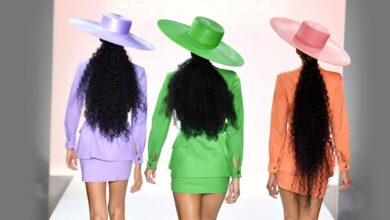Sustainable Fashion Paving the Path Towards a Greener Future

The fashion industry has long been renowned for its creativity and innovation, but it has also faced significant criticism for its negative environmental and social impacts. As the world grapples with the challenges of climate change and resource depletion, the need for more sustainable practices in all industries becomes increasingly urgent. Sustainable fashion is a solution that aims to revolutionize the way we produce, consume, and dispose of clothing while preserving our planet’s resources and fostering ethical practices. In this article, we will delve into the concept of sustainable fashion, its core principles, and the positive impact it can have on the environment and society.
Understanding Sustainable Fashion
Sustainable fashion, also known as eco-fashion or ethical fashion, is a holistic approach to designing, manufacturing, and wearing clothing that considers its environmental, social, and economic impact. It is an alternative to the fast-paced, throwaway culture that dominates the mainstream fashion industry, emphasizing durability, responsible sourcing, and conscious consumption.
Key Principles of Sustainable Fashion
Environmentally Friendly Materials:
Sustainable fashion prioritizes the use of eco-friendly materials, such as organic cotton, hemp, bamboo, and recycled fibers. These materials have a lower environmental footprint, as they require fewer chemicals, water, and energy during production.
Ethical Production:
Sustainable fashion promotes fair labor practices and ensures the well-being of workers throughout the supply chain. This includes fair wages, safe working conditions, and the prohibition of child labor.
Slow Fashion:
Contrary to the fast fashion model, which churns out cheap, trend-driven clothing at a rapid pace, sustainable fashion advocates for slow fashion. This involves creating high-quality garments that are timeless, durable, and versatile, encouraging consumers to invest in long-lasting pieces.
Circular Economy:
Embracing the principles of the circular economy, sustainable fashion strives to minimize waste and extend the life of clothing items. Recycling, upcycling, and encouraging second-hand markets are essential elements of this approach.
Transparent Supply Chain:
Sustainable fashion brands prioritize transparency by openly sharing information about their supply chains, manufacturing processes, and sourcing practices. This empowers consumers to make informed choices and supports accountability in the industry.
Positive Impact of Sustainable Fashion
Reduced Environmental Footprint:
By using eco-friendly materials, consuming fewer resources, and minimizing waste, sustainable fashion significantly reduces its impact on the environment. This leads to lower carbon emissions, decreased water usage, and less pollution.
Preservation of Biodiversity:
Sustainable fashion often supports organic farming practices, which help preserve biodiversity by avoiding harmful chemicals and promoting healthier ecosystems.
Social Empowerment:
Ethical production practices uplift garment workers by providing fair wages and safe working conditions, ultimately contributing to the improvement of livelihoods and communities.
Consumer Awareness:
Sustainable fashion encourages consumers to adopt a more conscious and responsible approach to shopping, fostering awareness about the impact of their choices on the planet.
Conclusion
Sustainable fashion represents a transformative shift in the fashion industry, one that addresses the pressing challenges of environmental degradation and social injustice. By embracing eco-friendly materials, ethical production methods, and the principles of a circular economy, sustainable fashion strives to create a more harmonious relationship between fashion and the planet. As consumers, businesses, and policymakers unite to support this movement, we can collectively create a greener, more sustainable future for generations to come.





